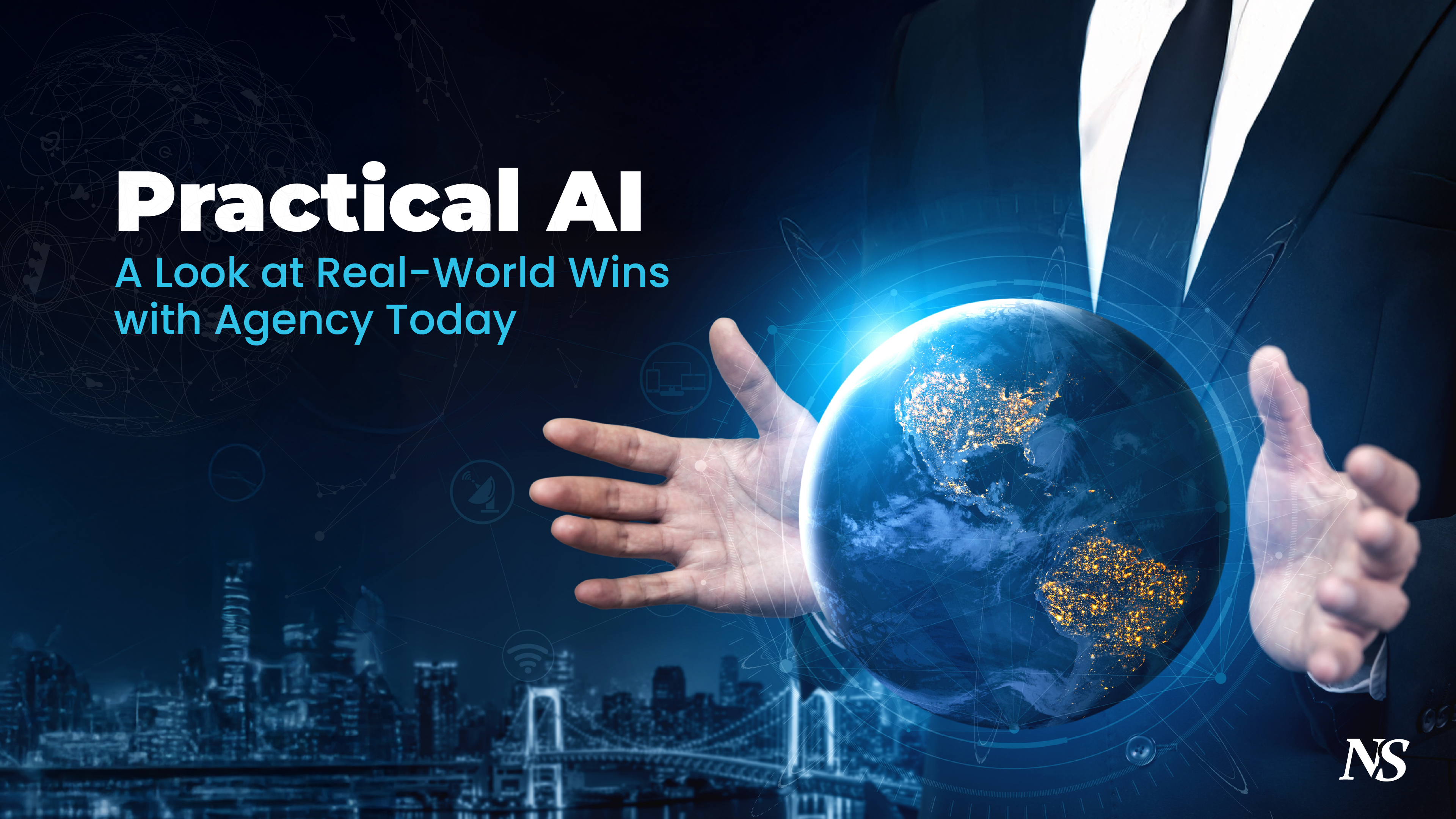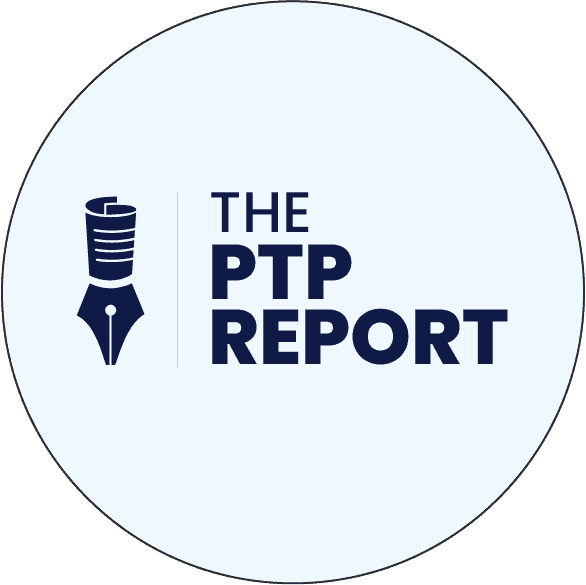I’ve been writing about AI a lot lately. This is probably not a surprise, as we’ve been working a lot with AI lately. As an AI-first global recruiting and consulting firm, PTP has made AI central to much of what we do every day. And it is only growing in that capacity.
My two most recent Substack articles are about how people are really using AI (both at work and home) and the idea of partial autonomy, or meeting AI where it is right now to maximize business benefits.
I’ve also been banging this drum in this newsletter, exploring how to rewire your business for AI and onboard AI agents with custom benchmarks.
Today I profile examples of practical AI in action. I am as fascinated by AGI as the next leader, but AI agents are here now, and they are increasingly successful at achieving real things in the real world. In some of these examples, we see the benefits of AI agent vs chatbot as the technology moves squarely into this new phase.
These examples are less about radical disruption or startup possibilities, and more about getting work done today. So let’s dig in.
Embedded AI Agents in Workflows: Breaking Out of (Chat) Boxes
OpenAI recently released a new benchmark aimed at measuring agentic capacity in the real world. They call this GDPVal, and it considers real work from 44 occupations across nine sectors (around 1300 tasks).
What’s unique here is that these are aimed at actual deliverables, or practical AI for the workplace, not academic or abstract measures they’ve been specifically trained to handle.
In their accompanying research, OpenAI claims frontier AI can match or beat humans on half of these tasks, and they’re gaining fast.
It’s interesting to look at the specific tasks it’s measuring here.
The takeaway is that performance is still extremely varied—brilliant at some things, lousy at others.
Two interesting points: OpenAI didn’t win their own test (Claude Opus 4.1 leads overall, and Claude 4.5 hasn’t been measured at the time of this writing), and hallucinations aren’t the leading cause of failure. But yes, they’re still happening. For GPT-5, failures were judged catastrophic 2.7% of time, bad 26.7%, and acceptable but subpar 47%.
The biggest problem seemed to be instruction following, and overall performance is highly jagged, or varied across tasks and sectors.
You can read the research itself or Jeremy Kahn’s writeup in Fortune for more on this.
I lead with this both to point it out as an intriguing new benchmark, but also to demonstrate how quickly agents are improving. Now let’s see how.
Real World AI Case Studies for 2025
AI in Healthcare Automation
We’ve written before about AI success at diagnosing health conditions in tests against real doctors, and of course the news is full of cutting-edge possibilities. (Last time out I spotlighted young innovators and their advances, and some of these, like making a mouse’s skin invisible, are in medicine.)
But right now, many of the biggest healthcare headaches come from volume, medical coding, and billing, and these are all areas where AI automation is making significant back-office headway.
One example comes from Omega Healthcare, who partnered with enterprise automation firm UiPath to develop a solution. Omega handles some 250 million digital healthcare transactions a year and these have, until recent years, all been done manually.
Their AI tool automatically pulls data—like accounts receivable correspondence, insurance letters, electronic medical records—from clients and extracts what it needs based on the task.
These systems run around the clock and bring both higher consistency and traceability.
They’ve managed to automate admin tasks for about 60–70% of their clients and have now processed more than 100 million transactions through their AI workflows.
Their wins with AI have been significant:
- 15,000 hours of employee work per month saved
- Workers spending 40% less time on documentation tasks
- Processing time accelerated by 50%
- Process accuracy up to 99.5%
- And overall, they’ve seen a 30% return on investment for clients
AI in Software Engineering Code Generation and ROI
In our PTP Report, we’ve written a lot about the AI impact on software development. (You can check out this recent PTP Report on vibe coding advances for one recent example.)
It’s one of the most active AI use cases (at work or home), and the predictions on its eventual impact are extremely grand.
Here, let’s consider Goldman Sachs’ effort to utilize entirely autonomous coding agents. Partnering with startup Cognition, they are currently deploying hundreds of Devins—autonomous coding agents—with the aim of increasing this number to the thousands soon. They have 12,000 human developers now, and these agents will augment their work.
The investment bank is taking the reasoning model from Cognition and applying it to their own propriety data in-house, and (from reporting by CNBC) expect productivity boosts of three-to-four times what they’re getting from current tools.
With the goal of helping coding agents with enterprise needs, Reflection, a startup founded by former Google researchers, has developed Asimov. This agent reads an entire codebase (as well as related things like Slack messages and in-house ticketing) so it can propose systematic changes, instead of handling coding asks in small bites. As we covered in the PTP Report I referenced above, this is a limitation now for enterprises looking to seize on true vibe coding.
Asimov is deployed in a private cloud for security and operates as a multi-agent system with the goal of giving agents greater understanding and context for enterprise work.
Finance: From the Front End to AI for Back Office Process Automation
We have already looked at agents being deployed at Goldman Sachs for coding.
AI is also being used on both the front and back end of finance workflows itself, aside from coding. The AI @ Morgan Stanley Debrief tool is used daily by the company’s advisors, with some 98% adoption.
Powered by OpenAI, it generates notes on client meetings, creates action items, writes emails for the advisors to edit and send when ready, and saves data directly to Salesforce.
UBS has its own employee assistant, Red, built with Microsoft, which helps personalize insights to clients and provides its own advisors with a similar form of smart assistant.
AppZen provides finance-specific AI agents already in use by a third of Fortune 500 companies. These review expenses, invoices, and accounts payable with real-time audits to flag duplicates, policy violations, and potential fraud ASAP.
AI’s Calling: Sales, Marketing, and Customer Engagement
Two areas in the professional world where AI is drawing a lot of attention are sales and marketing, and Wired reported late last month on “virtual salespeople” in China who are even outperforming humans.
These virtual people sell almost any kind of product, 24/7, on livestreams like Taobao, and look, and act, like real presenters. They greet the audience, share product information, and answer questions, and are doing 30% more business than their human counterparts. (They also include a constant AI disclosure on-screen, though it can be easy to miss.)
In the US, we’ve written before on the AI boost at Salesforce, where CEO Marc Benioff has said the technology is already doing 50% of the work on many teams, including sales support.
AI voice outreach is also helping companies across industries do things their human reps can’t. This includes repairing customer databases, handling additional (or neglected) outreach, making follow-ups, scheduling, and notifications.
Then there’s YouTube. Google has been adopting AI across its offerings, and the service now lets creators generate YouTube shorts on their own using prompts. These have watermarks and disclosures, but it’s shown the mainstream adoption of AI video, with capacities that are improving fast. I’ve written previously on Veo 3, and OpenAI this week released Sora 2 which again carries the mark forward.
In marketing, AI imagery, audio, and video have simply revolutionized what companies of all sizes can achieve.
Agents for Sleeping and AI in E-Commerce Pricing Optimization
Delta Airlines made news this summer for rolling out AI use in their domestic pricing (3% adoption, with the plan to raise this to 20% by the end of the year). This is part of the company’s complete overhaul for pricing, aiming to optimize the value of services it is already providing with far greater specificity than what they’ve been able to obtain previously.
And while this may sound like a great idea for making smarter decisions, it’s also led to backlash from customers.
Delta was forced to specify that they won’t be setting different prices for different customers based on their personal data. Instead, the technology is about forecasting demand for routes and aggregating purchase history overall.
But in a bid to show investors how AI is helping their business, they also alienated customers. I believe these challenges can be mitigated by also sharing with customers what they are gaining from AI—which in this case can also mean more affordable routes and improved customer service.
Also impacting consumers (far less contentiously), AI is moving into the bedroom, in the form of smart mattresses.
With one-in-three Americans reportedly getting insufficient sleep, there’s a market for products like Eight Sleep’s Pod. This innovative technology measures sleep by stages, and a sleeper’s heart rate, breathing, and movement, and automatically adjusts things like firmness and temperature.
It can even detect snoring and elevate accordingly. It’s just one example of a flood of product innovations that bring more personalization to bear for consumers.
In Conclusion: Common Traits from Enterprise AI Adoption Success Stories
I’ve shared a lot of successful AI adoption snapshots that have stood out to me, and among them, there are clear patterns.
The biggest wins I’m seeing aren’t coming from trying to replace whole jobs, because AI is still quite lousy at this. There’s no doubt that it can produce a lot of lower-quality work fast.
Better of course is AI with human in the loop, especially with agents who can get confused on instructions and deliverables and still fare better taking on tasks in smaller bites.
Where I see practical adoptions thriving most are really in two areas:
- Accelerating and standardizing repetitive, tedious, first-pass work which people often can’t get to and will need to check anyway (examples above in healthcare, coding, finance, sales, and marketing). Another great example of this in action is agentic software testing, which we help companies implement at PTP.
- The other is finding insights people cannot for themselves, either because of scale or capacity (examples above in coding, pricing, consumer offerings). This kind of assistance is more a co-intelligence model, where the AI makes us better by extending our capacities.
In other words, many of today’s best practical AI business outcomes are not flashy.
I acknowledge this may feel odd for a technology with such breadth of knowledge, and such a capacity to dazzle us at times.
While AI companies invest in world models and other alternatives to bring together with LLMs and scale out data centers, the rest of us can get to work with what we have now.
References
AI models are already as good as experts at half of tasks, a new OpenAI benchmark suggests, Fortune
Alphabet’s Isomorphic Labs has grand ambitions to ‘solve all diseases’ with AI. Now, it’s gearing up for its first human trials, Fortune
A healthcare giant is using AI to sift through millions of transactions. It’s saved employees 15,000 hours a month., Business Insider
Goldman Sachs is piloting its first autonomous coder in major AI milestone for Wall Street, CNBC
Former Top Google Researchers Have Made a New Kind of AI Agent, CNBC
AI May Determine the Price of Your Next Delta Ticket, Investopedia
Backlash to Delta’s AI pricing shows the tightrope companies walk when it comes to AI, Business Insider
Chinese ‘Virtual Human’ Salespeople Are Outperforming Their Real Human Counterparts, Wired
Eight Sleep raises $100M to expand its AI-powered sleep tech, TechCrunch





